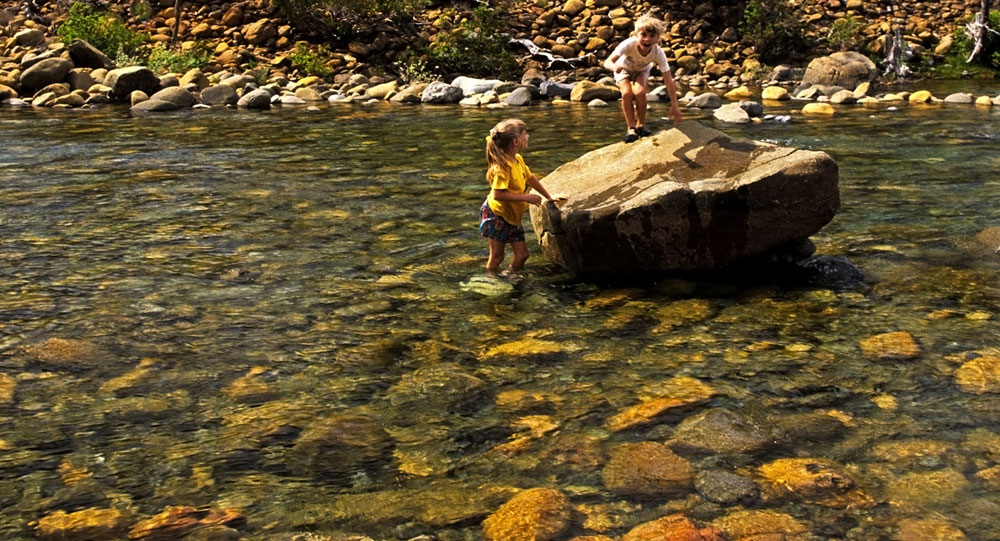
Closing Clean Water Act Loophole Will Protect Drinking Water and Benefit Bathers and Breweries Alike (Op-Ed)

Peter Lehner is executive director of the Natural Resources Defense Council (NRDC). This Op-Ed will appear onthe NRDC blog Switchboard. Lehner contributed this article to Live Science's Expert Voices: Op-Ed & Insights.
Like millions of Americans, I love the water. I love to swim, boat and fish, as do many of my family and friends. We all recall swimming in dirty water; it wasn't all that uncommon a few decades ago. I even recall being told I would need a hepatitis shot if I fell into the nearby river. At the same time, the wetlands and small streams that fed our drinking water supplies were vulnerable to being buried and destroyed.
Fortunately, our waters are cleaner and more protected today than they were 40 years ago. We can thank the Clean Water Act for that. This law transformed our rivers, lakes, coastlines and streams from private garbage dumps for industry into valued public resources that sustain communities.
However, big polluters opened a loophole several years ago that made it easier to dump waste in many waters without fear of repercussions. In hundreds of cases, the loophole has rendered the U.S. Environmental Protection Agency (EPA) — and its sister agency on clean water matters, the U.S. Army Corps of Engineers — unable to protect communities and go after those polluters. Today, the administration of U.S. President Barack Obama proposed long-awaited safeguards that would close this loophole and protect millions of miles of threatened streams and millions of wetland acres, and the millions of Americans who depend on them for drinking water.
Natural water systems are complex and interconnected; large or small, steady or intermittent, they all play an important role in the way we live. Near my family's home in New York, I walk past little streams and wetlands that feed our drinking water supply and the lake where we love to swim. Nearly 2 million miles of little streams like these, even if their flow is seasonal, help provide drinking water for 117 million Americans; wetlands help filter water, even if they appear to be "isolated" on the surface, as are 20 percent of all the wetlands in the continental United States. Yet lawsuits filed by polluters and weak policies adopted under the previous administration have left these streams and wetlands without adequate protection. When a polluter dumps waste in these seemingly isolated or impermanent waterways, the EPA and the Corps often cannot hold the perpetrator accountable.
This has happened in thousands of cases across the country. When crude oil spilled into a small stream in Talco, Texas, for example, the EPA was forced to let the incident slide, despite the fact that streams like these help supply the drinking water system that serves more than half the residents of Titus County. The agency was similarly hamstrung in Lake Blackshear, Ga., where swimmers and boaters had to contend with manure in the water following a discharge from a factory farm upstream.
Under the new safeguards proposed by the Obama administration, hundreds of communities previously left at the mercy of the polluters will now enjoy the full protections of our clean water laws. Bringing these streams and wetlands under the umbrella of the Clean Water Act will help protect drinking water for 117 million people. It will safeguard natural flood protection — wetlands and streams help catch and soak up rain. This is no small benefit: 9.6 million homes and $360 billion dollars-worth of properties lie in flood-prone areas. Similarly, brewers rely on clean water to sustain their businesses and are cheering the new protections, as are hunters, anglers and wildlife-lovers.
Get the world’s most fascinating discoveries delivered straight to your inbox.
I've worked to protect the quality of our waters for many years. Polluters will claim that this proposal is rooted in politics. In fact, it is law and science. The Supreme Court decisions that led to this rollback actually permitted the EPA and the Corps, based on scientific evidence that smaller waters significantly influence water conditions downstream, to close the gap in protections. They're using strong, solid science, together with the venerable 41-year-old Clean Water Act, to protect and safeguard our waters and thus our health. It's thrilling to see the agencies do exactly what the U.S. Congress and the U.S. Supreme Court expect them to do.
We all have a right to clean water. Protecting that right means protecting our natural water systems as a whole, and not just some individual bodies of water. Pollution doesn't stay put— whatever gets into a small stream or wetland will have repercussions somewhere else in the system, in the creeks that feed drinking water supplies, in the rivers that flow into our oceans, and in the breeding grounds for birds and fish. The proposal from President Obama's administration will help keep pollution out of vital streams and wetlands, protect drinking water supplies, and help ensure that our water resources remain safe and healthy for people and wildlife.
Lehner's most recent Op-Ed was "EPA's New Car Emissions Standards Will Clear the Air." The views expressed are those of the author and do not necessarily reflect the views of the publisher. This version of the article was originally published on Live Science.
